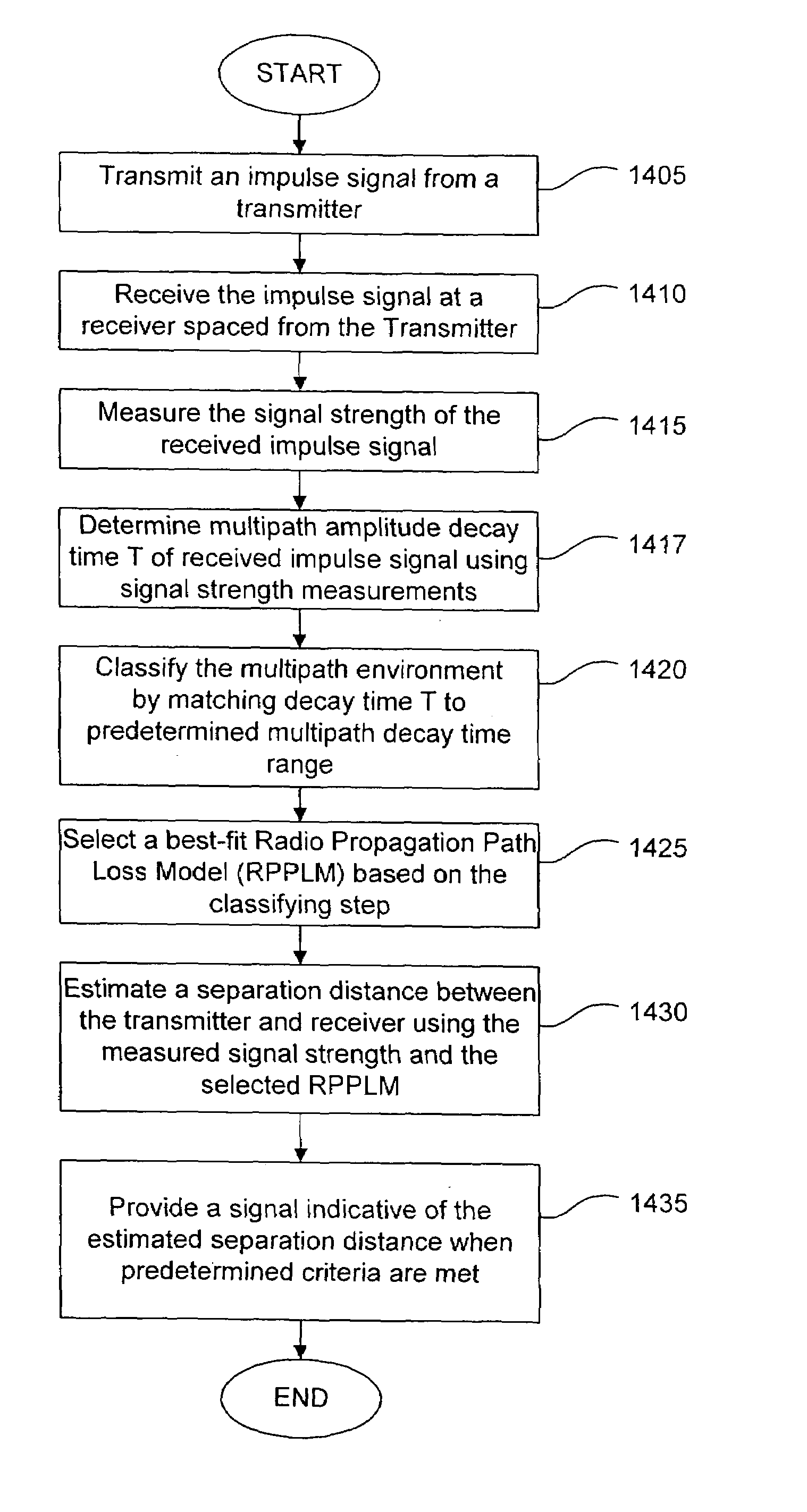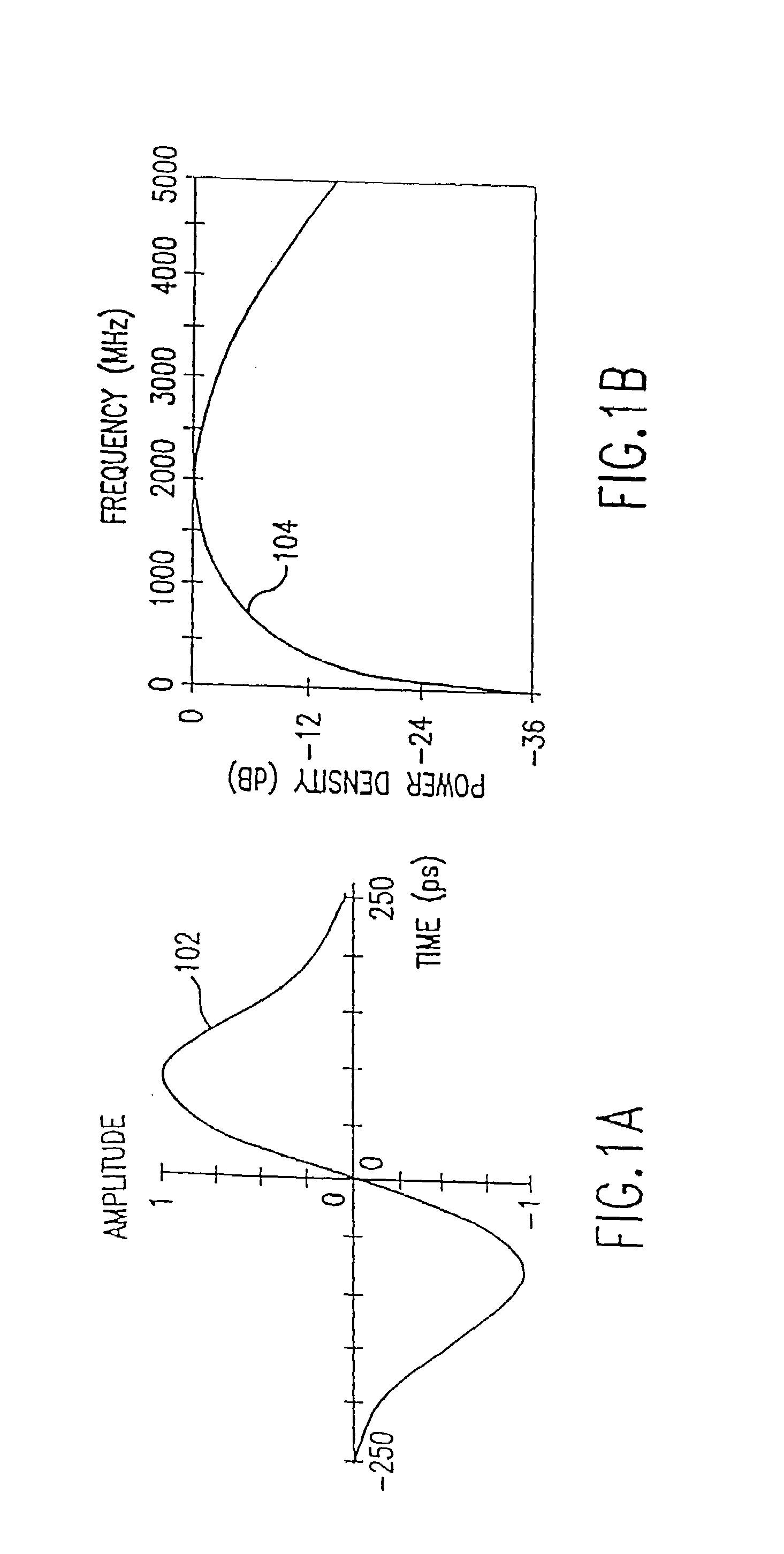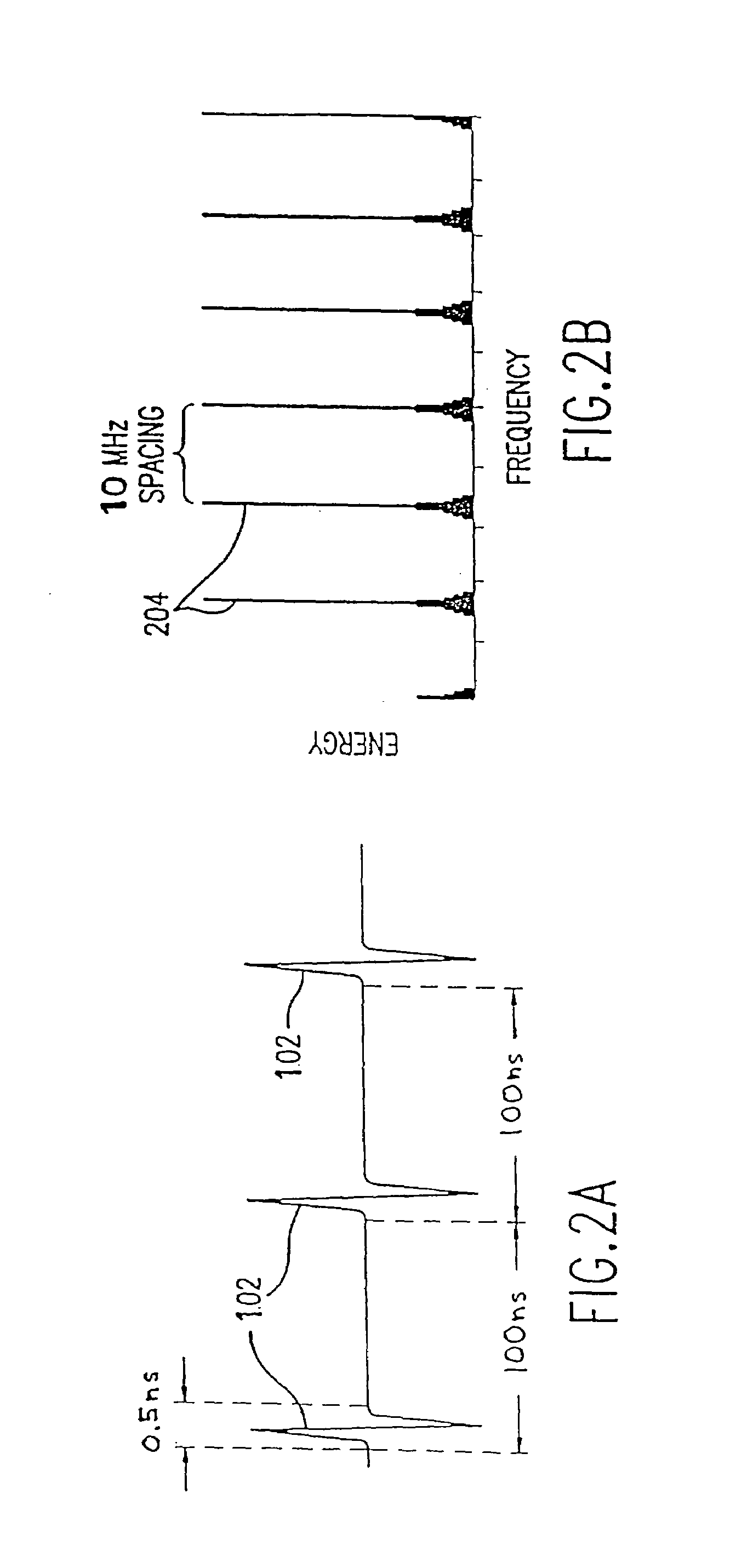System and method for estimating separation distance between impulse radios using impulse signal amplitude
a technology of impulse radio and amplitude, applied in the field of radio signals, can solve the problems of -to-one (30:1) distance measurement errors, narrow band, and system disadvantageous to complex transceiver circuitry and/or time-synchronization techniques, and achieve the effect of resisting multipath fading effects, improving separation distance estimates, and improving performan
- Summary
- Abstract
- Description
- Claims
- Application Information
AI Technical Summary
Benefits of technology
Problems solved by technology
Method used
Image
Examples
Embodiment Construction
[0039]
Table of ContentsI.Impulse Radio Basics I.1. Waveforms I.2. Pulse Trains I.3. Coding for Energy Smoothing and Channelization I.4. Modulation I.5. Reception and Demodulation I.6. Interference Resistance I.7. Processing Gain I.8. Capacity I.9. Multipath and PropagationI.10. Distance Measurement Using Time MeasurementsII.Exemplary Transceiver ImplementationII.1. TransmitterII.2. ReceiverIII.Overview of the InventionIV.Impulse Radio TransceiverIV.1. Transceiver OverviewIV.2. Receiver OperationIV.2.a. Signal DetectionIV.2.b. Signal Strength MeasurementV.Determining Separation DistanceV.1. OverviewV.2. Amplitude-Time Multipath Waveform AnalysisV.3. Radio Propagation Path Loss ModelsV.4. Detailed Process for Estimating Separation DistanceVI.Exemplary Transceiver Computer SystemVII.Exemplary Transceiver Comparator SystemVIII.Conclusion
I. Impulse Radio Basics
[0040]This section is directed to technology basics and provides the reader with an introduction to impulse radio concepts, as we...
PUM
 Login to View More
Login to View More Abstract
Description
Claims
Application Information
 Login to View More
Login to View More - R&D
- Intellectual Property
- Life Sciences
- Materials
- Tech Scout
- Unparalleled Data Quality
- Higher Quality Content
- 60% Fewer Hallucinations
Browse by: Latest US Patents, China's latest patents, Technical Efficacy Thesaurus, Application Domain, Technology Topic, Popular Technical Reports.
© 2025 PatSnap. All rights reserved.Legal|Privacy policy|Modern Slavery Act Transparency Statement|Sitemap|About US| Contact US: help@patsnap.com



